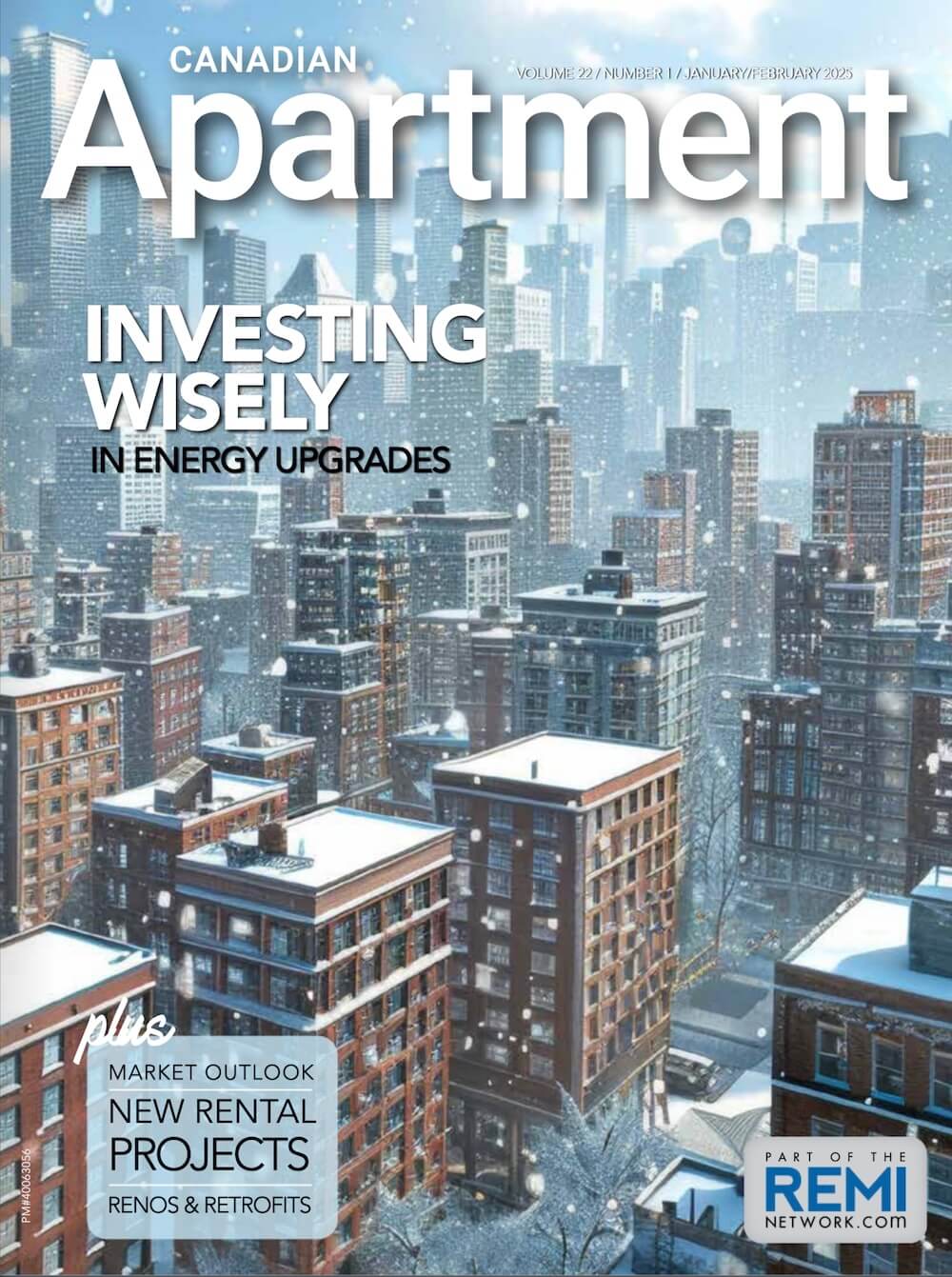As more people live and work at home 24-7, some property managers, condo boards and other tenant organizations are paying close attention to how smart tech helps clarify energy usage and what that means for resident comfort and costs.
In the middle of a pandemic, it’s hard to shift attention to things like condo energy use and increased building emissions output, but improving energy efficiency is important to consider. Innovative, smart energy management technologies can make residential buildings more comfortable, ultra energy-efficient, lower-carbon emitters and more resilient to unforeseen economic downturns like COVID-19.
Meeting these objectives calls for smart-tech upgrades to the heating cooling and air conditioning (HVAC) systems of multi-residential buildings. This is the easiest option for improved energy efficiency for one core reason: HVAC equipment in most existing condos is dated.
HVAC primarily operates with two settings — on and off — but we would never want other infrastructure in our lives to run this way. Take a car for example. Imagine driving a car that only has an off switch to go 0 km/h, or an on switch that drives at 150 km/h. There isn’t any balance and it’s simply not efficient to drive this machine.
So, instead of fronting the cost to fix dated HVAC equipment with a retrofit or replacement, condos can look to alternative energy and cost-efficient solutions. Installing a lean energy management automation system is one simple yet dynamic way to improve energy efficiency at a building-wide level.
Automation systems come in many shapes and sizes. Look for energy management systems that harness smart tech like artificial intelligence (AI), Internet of Things (IoT), data and analytics to accurately target energy inefficiencies.
Smart Tech Lowdown
How does it all work? Energy management platforms that attach to HVAC start to look at data. AI systems learn what normal operations look like, how to identify states of failure, and where efficiencies can be found. It’s important to find these patterns because a building with an older, largely retired demographic will present a different data pattern than a much younger working demographic at 9 a.m. for example. AI can help segment the exact needs and usage patterns of varying buildings and see in usage patterns how best to provide comfort to residents.
With a subset of data that shows areas for improvement, like a need for better air filtration or faster hot water boiling, energy management software can apply discipline to the controls of the building like streamlining energy use, temperature control and equipment performance. Another example is IoT sensors that can detect higher than normal CO2 levels in the lobby of a condo. This signals HVAC control to start pumping air throughout the building to improve ventilation and air filtration, resulting in better air quality and a healthier living environment for residents.
By applying smart tech to the boiler room of a condo, condo managers will see the changes in less than a month with virtually no disruption in building operation. Not to mention a 30-50 per cent decrease in carbon emissions.
Not only does condo-wide energy efficiency benefit the end-user, but making condo buildings more energy efficient as a whole helps to do a lot of good things including modernizing the energy grid; helping meet environmental carbon emission goals; creating resilient infrastructure that’s equipped to weather economic downturn; and stimulating economic activity for boiler room mechanics and energy engineers across Canada.
Brad Pilgrim is the CEO and co-founder of Parity Inc. Over the past three years, Brad has led the company to develop and deploy an AI-powered energy management platform for multi-residential buildings in order to eliminate energy waste in buildings and cultivate more sustainable urban environments.





